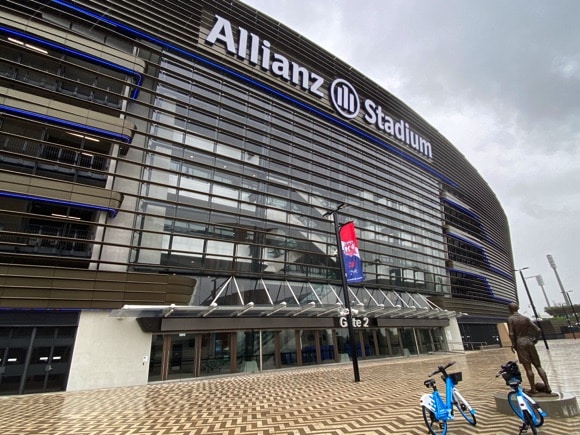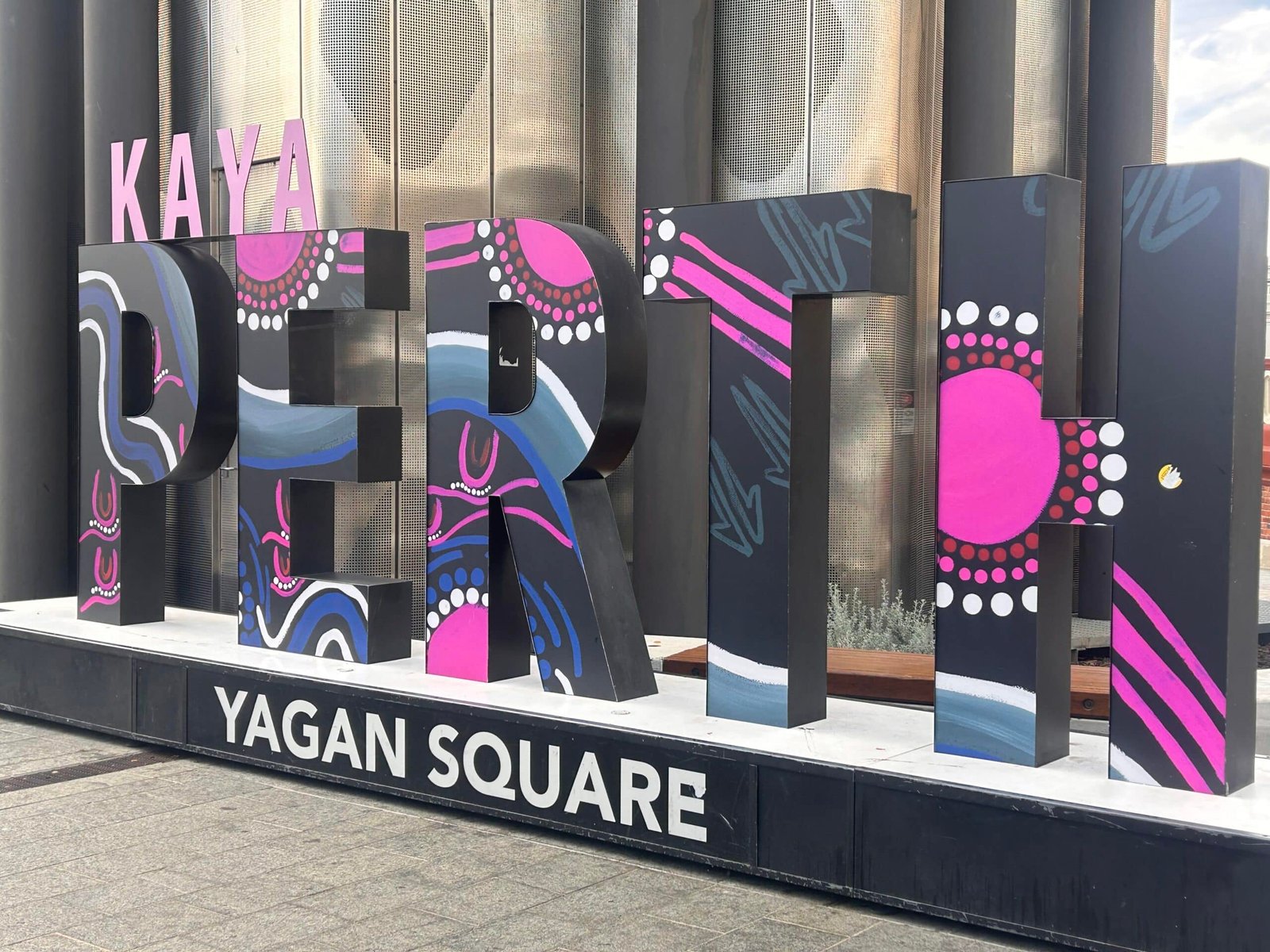Teams, tales and tips – a guide to the local game
When it comes to putting on a show, it’s hard to beat Sydney. The largest crowd in Olympic history, 114,714, witnessed the closing ceremony of the 2000 Games at what is now known as Stadium Australia, Accor Stadium to its sponsors. The Sydney Olympic Stadium, as it is also referred to, soon saw its capacity reduced to 83,500 but the atmosphere was no less fiery for the final stages of the 2003 Rugby World Cup here.
Five games of the 2023 Women’s World Cup, including the England-Spain final, Australia-England semi and Australia’s opener with Ireland, pushed capacity to the limit once more, despite the Olympic Park being 15km west of central Sydney in Homebush Bay.
More group games were staged at the Sydney Football (aka Allianz) Stadium, alongside the Sydney Cricket Ground in the district of Moore Park south-east of town. Opened in 2022, the new home of Sydney FC replaced the previous Sydney Football Stadium where the record A-League champions were based until its closure for demolition in 2018.

For the football tournament of the 2000 Olympics, Norway picked up a surprising gold at the expense of holders USA in a dramatic final at the original Sydney Football Stadium – the crowd smaller than the 29,400 who witnessed the Matildas’ brave attempt to stop Brazil in the last match of the group stage.
The men’s final, meanwhile, drew 104,098 to the Olympic Stadium, an all-time record for the event, to see Xavi’s Spain fall in an equally epic clash, Samuel Eto’o’s Cameroon converting their five spot kicks to claim gold.
The most seminal moments in Australian soccer history have taken place in and around Sydney, in fact, from the first ever match involving Wanderers FC out at Parramatta in 1880 to Mark Schwarzer’s goalkeeping heroics to put the Socceroos into the 2006 World Cup 125 years later.

In between, the game took off in Australia’s biggest city with the post-war migration from Europe. Expat Italians, Greeks, Hungarians and Yugoslavs formed clubs such Schwarzer’s alma mater Marconi, Sydney Olympic (originally Hellenic), St George (originally Budapest) and Sydney United (originally Sydney Croatia) in the late 1950s. These clubs and their local rivals provided nearly all the Australia squad at the 1974 World Cup before initially dominating the National Soccer League it inspired.
When the A-League was formed in 2005 after the NSL’s demise, it was on the principle of one city, one club. After a bitter battle, Sydney FC won the franchise here, although debate still raged over whether home should be the Sydney Football Stadium or the Parramatta Stadium some 15 miles west. The Sky Blues duly set up in town, winning the first A-League Grand Final there in March 2006. Parramatta, where Sydney Olympic played Marconi before a then record soccer crowd of 26,353 at the NSL Grand Final in 1990, mainly staged rugby league but Western Sydney remained hungry for its own soccer team.
When an A-League berth became free in 2012, a new club was formed in Parramatta, its name echoing soccer tradition. Western Sydney Wanderers moved into the Parramatta Stadium, in the same parkland where that first soccer game was played in 1880. Western Sydney may have been snubbed by SFC but the glamour side had failed to generate a substantial fan base across the city.

After a season of average gates below 12,000, the Sky Blues broke the bank to sign Alessandro Del Piero before the 2012-13 campaign. In the first Sydney Derby at a packed Parramatta Stadium, the Italian superstar duly missed a penalty – but scored the game’s only goal from the rebound. Wanderers then notched up ten straight wins to win the A-League Premiership in that debut season, qualifying for the AFC Champions League. Playing all their home games in Parramatta, including the first leg of the final, WSW became the first, and so far only, Australian club to win Asia’s premier trophy.
The SFC-WSW clash, meanwhile, was filling all 40,000 seats at the Sydney Football Stadium, outshining attendances for rugby fixtures. In 2016, an A-League record was set when 61,880 at the Stadium Australia witnessed Sydney FC swat away Wanderers 4-0 in the so-called Demolition Derby.
After the 2000 Olympics, the national arena replaced the Sydney Football Stadium as the stage for the Socceroos’ major games, the most dramatic being the confederation play-off against Uruguay in 2005. A heartstopping penalty shoot-out earned goalkeeper Mark Schwarzer immortality as a full house of nearly 83,000 saw Australia qualify for a first World Cup in 32 years – while a full house of nearly 44,000 at the Sydney Football Stadium had witnessed the Aussies hold Maradona’s Argentina to a 1-1 draw in a failed attempt to reach the finals in 1993.
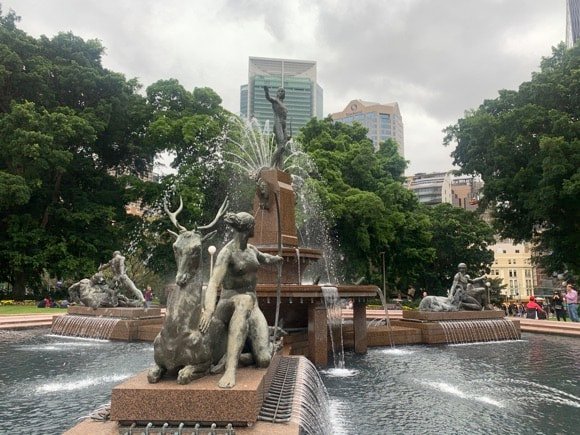
Both arenas were later the subject of much debate about demolition and rebuilds, the Sydney Football Stadium knocked down in 2019. In the three years before a new one was built, Sydney FC played at two mid-sized rugby-league grounds, the Leichhardt Oval in Lilyfield and the Netstrata Jubilee Stadium in Carlton.
Stadium Australia was also home to Western Sydney Wanderers for three years – hence those derby games – while the Parramatta Stadium became today’s Western Sydney Stadium, sponsored name Bankwest.
One tier below the A-League, with no promotion or relegation between them, NPL NSW clubs such as Sydney United 58, Sydney Olympic, Marconi Stallions and APIA Leichhardt still enjoy prominent status, serving the communities who formed them back in the 1950s. Other past NSL champions are now further down the pyramid. The one crossover point between the leagues is the FFA Cup. In 2019, Sydney FC met another old rival, St George, in the Round of 32, a 5-3 thriller with two goals in stoppage time.
Getting Around
Arriving in town and local transport


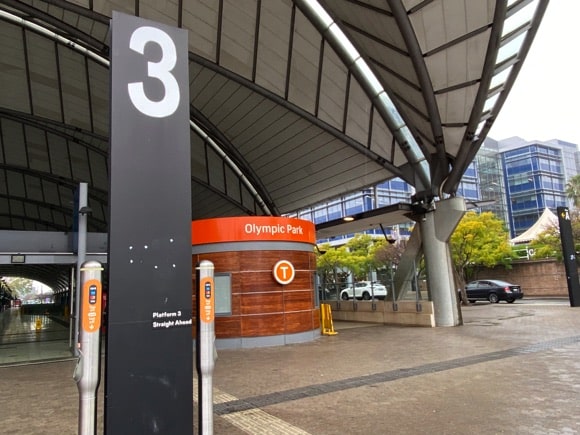
Sydney Airport is 8km (five miles) south of town. International and domestic terminals have separate stops served by the same Airport Link on line T8 to main hub Central station (every 5-10mins, journey time 15mins) on the nine-line Sydney Trains network.
Payment for travel across greater Sydney is by Opal card, free from transport centres and news agencies, minimum initial top-up A$20 (airport A$35, single to Central A$18). Opal and contactless credit/debit cards are also valid for the same fare, for all forms of transport.
These comprise the one-line Sydney Metro, the three-line Light Rail network as well as the Special Event service to the Sydney Football Stadium at Moore Park from Central Chalmers alongside Central Station, Sydney Trains, the regional NSW TrainLink, buses (including Major Event services to Sydney Olympic Park) and ferries.
Touch in and out at all-transport readers but not when transferring between Sydney Metro, Sydney Trains and NSW trains, considered one journey.
Fares are capped at A$16.80 a day (A$8.40 at weekends and on public holidays) or A$50 a week, plus there’s a 30% off-peak discount outside working hours but not with an Opal single ticket (Light Rail/Bus A$4, Metro A$4.60, Ferry A$7.70). Plan your journey with TransportNSW.
A taxi from the airport to the city centre should cost around A$50, including the A$5.45 airport toll. 13cabs (+61 13 2227) are as good as any.
Where to Drink
The best pubs and bars for soccer fans
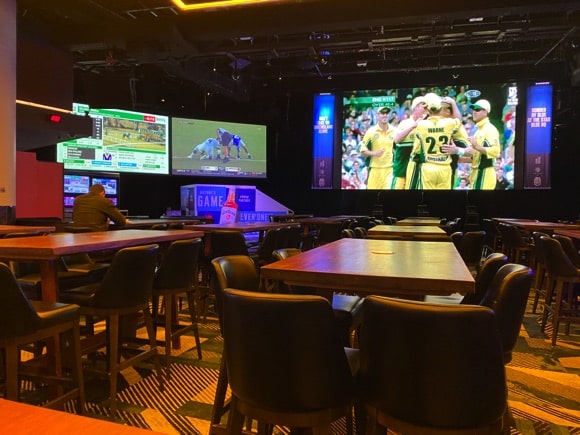

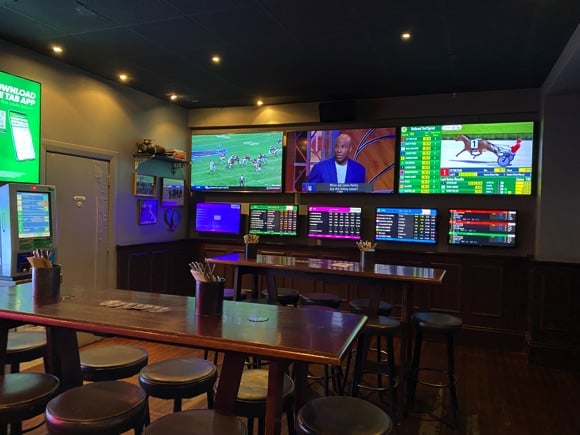



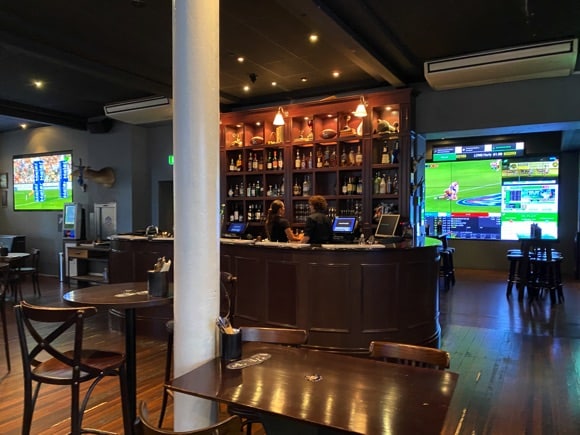
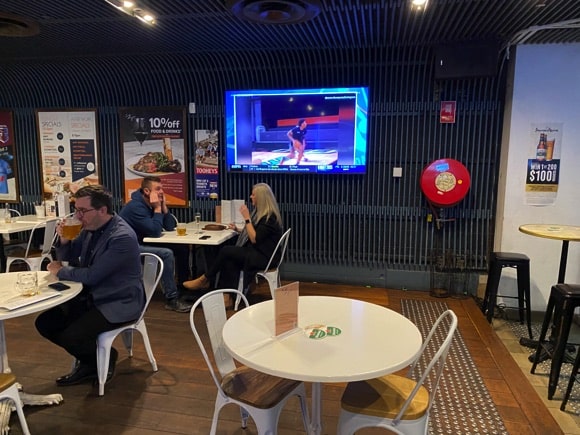

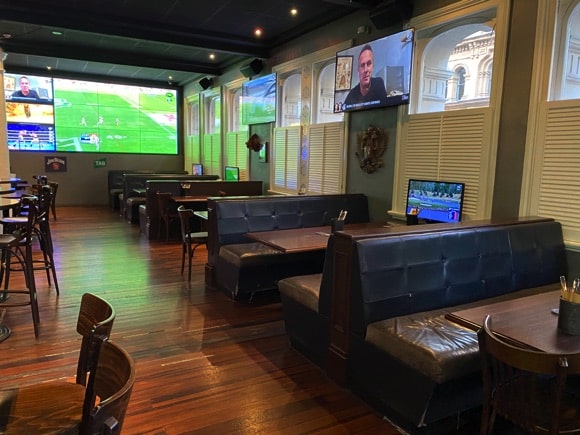

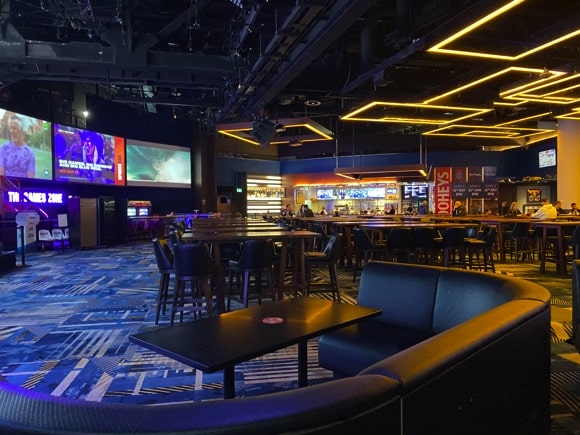

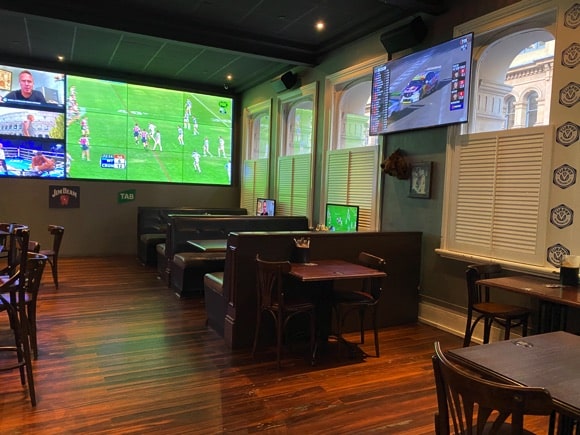

The city does not lack for sports bars and pubs, with some gems among them – for an idea, see the 7 best soccer bars in Sydney.
The Sporting Globe nationwide franchise is hospitality on an industrial scale – two million-plus customer visits across Australia every year, nearly 1.5 million wings devoured, 240,000 hours of sport broadcast – but there’s no denying the pleasure of a pint overlooking Darling Harbour surrounded by match action from every screen – as is the case for the King Street Wharf branch, a prime choice for many a sports fan in Sydney.
Across the harbour, the Star Sports Bar is pretty much in the same vein, only bigger – more than 50 LCD TVs fill this huge, gleaming space, along with one with size of a studio flat, 34 square metres, all part of a casino within a twin-hotel and entertainment complex, The Star Sydney, tucked in behind Pyrmont Bay.
Sports bars and pubs dot Sydney CBD, the central business and retail quarter. One is The Flynn on Bligh Street, lined with screens and working from a long wine list, burgers a speciality. Where York Street meets King Street, upstairs at Hotel CBD, York 75 combines sports bar with traditional pub, allowing you to sink into a Chesterfield, surrounded by mahogany as you take in the action beamed on 20 screens and sip your Hahn Super Dry or Kosciuszko Pale Ale.
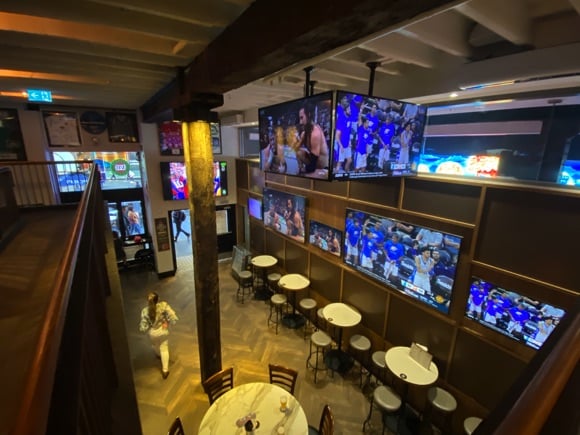
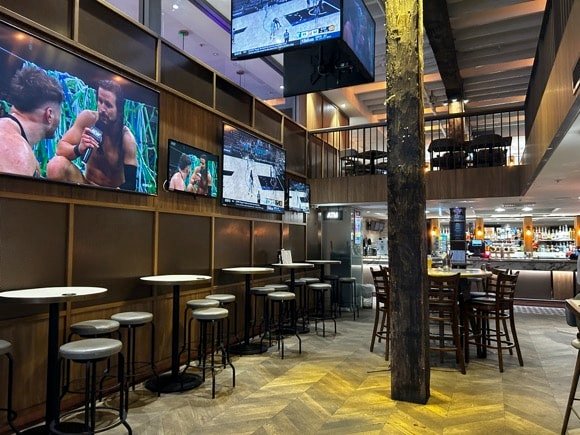
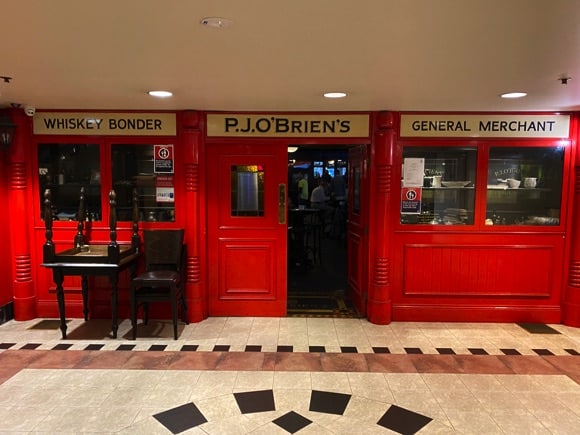
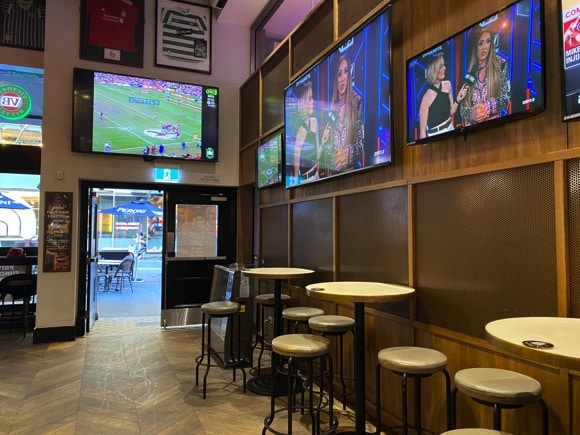

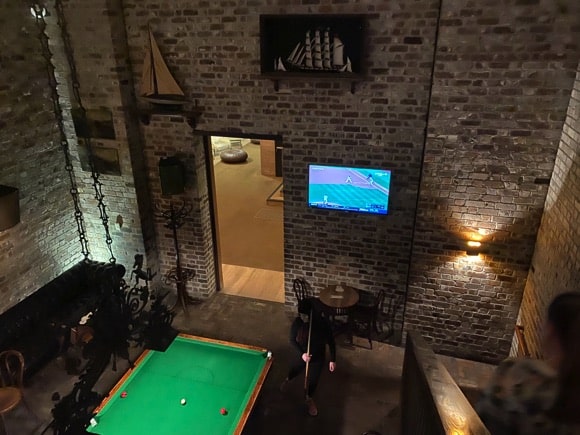
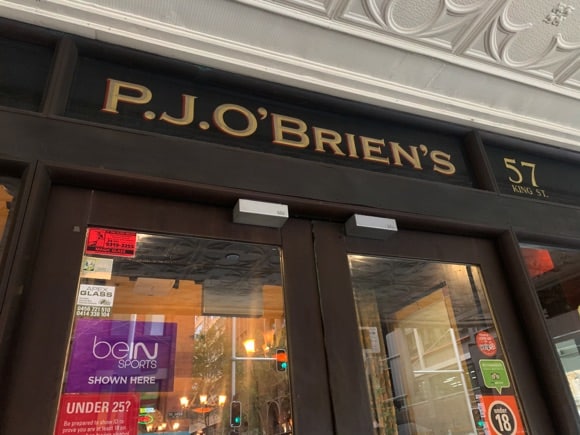


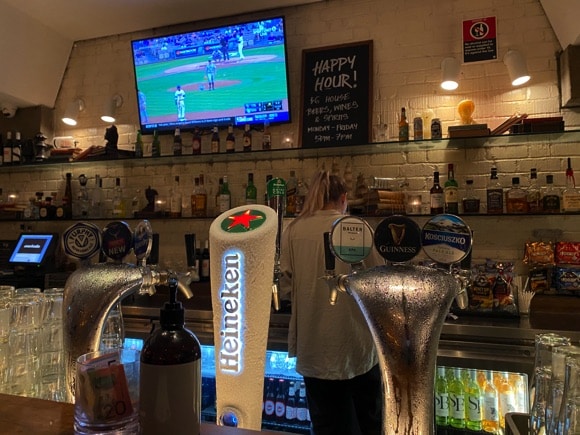

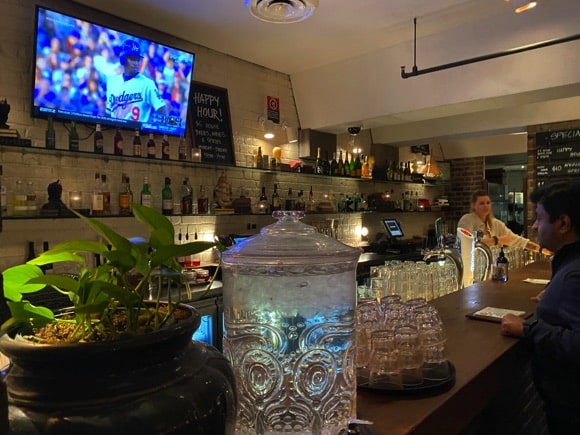
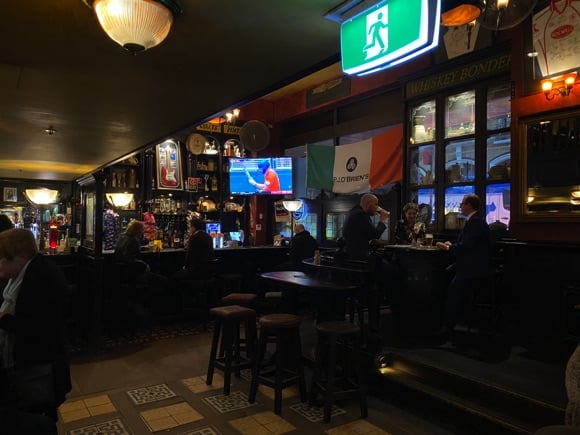

Round the corner, PJ O’Brien’s shows an exhausting schedule of matches in pub surroundings of Irish character, underscored by the range of whiskeys and live music four nights a week. Balter XPA, Stone & Wood Pacific Ale and Peroni complement Guinness and Kilkenny among the draught options.
By the Town Hall on Pitt Street, The Criterion Hotel is known for its street-level bar and The Snug downstairs, awash with big screens. Here, the Irish heritage is genuine, the hotel taken over by the grandson of JJ Gallagher, a third-generation descendant of Limerick newcomers.
On nearby George Street, the Cheers Sports Bar dates back over 25 years in its current form, a light and lively three-floor hostelry, with a terrace and screens aplenty, overseen by the Harvey family. Closer to Wynard Light Rail station, the Royal George shows sport in Anglo rustic pub surroundings.
You can’t leave Sydney without visiting the Opera Bar, waterfront home of the Sydney Sling, to be sipped on the long terrace in the iconic shadow of Sydney Opera House. It’s not all cocktails – no-one will bat an eyelid if you order a pint and take in the view.




